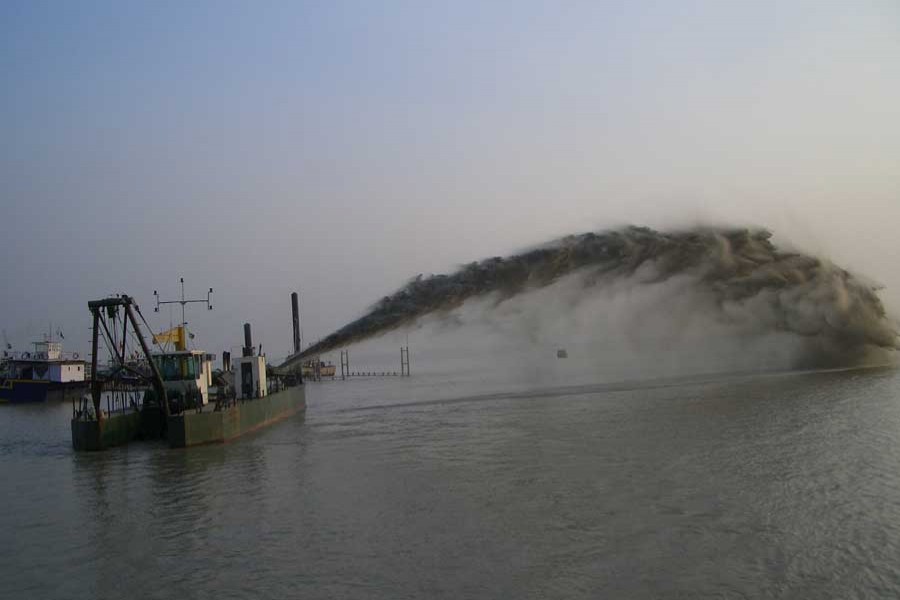The cabinet nod to the dredging of 470 kilometres (kms) of river routes to facilitate Bangladesh-India water transit and trade comes as a welcome relief. The waterway earmarked for dredging is set to start from Jakiganj of Sylhet to Ashuganj and Sirajganj in Bangladesh up to Doikhawa in India. The dredging project will jointly be financed by the two countries, with India providing 80 per cent of the cost, and Bangladesh bearing the rest 20 per cent.
Dredging of rivers with low navigability has been a critical issue since the signing of the protocol between the two neighbouring countries. For the Indian cargo vessels travelling to the country's northeast will have to cross several rivers in Bangladesh. Many of them are afflicted with low navigability, and thus in need of dredging. With the land crisscrossed by about 700 rivers and their tributaries, the imperative for dredging its dying ones has long been in focus. But poor fund mobilisation, lack of coherent policy as well as corruption and red tape continue to create impediments to its full-scale execution. Thanks to the Bangladesh-India river transit protocol, at least 470 kms of waterway in the country are set to be taken care of. But the length of the route is meagre if compared with the 24,140-km stretch of the country's rivers. The proposed dredging work under the India-Bangladesh protocol, undoubtedly, brings to light the navigational plight of the country's rivers. As has been seen in the last few decades, it is due to the lack of timely dredging that majority of the land's rivers keep losing their normal flow. In the decades-long process a considerably large number of rivers have lost partial to complete navigability, with many on the verge of disappearance.
Dredging was once a simple process of pumping out liquid sediments accumulating in riverbeds and releasing the muddy water through pipes into other areas. It eventually became complicated. Despite giving the lost current and navigability back to rivers, the task kept becoming entangled with a number of hazards. Those include environmental impacts and those of bio-diversity loss, improper land reclamation and prolonged disruptions to use of waterways. Coming to environment and bio-diversity, slipshod dredging has been identified as having a damaging impact on the aquatic life. Dredging triggers spread of contaminated materials lying on riverbeds. The regrouping of harmful underwater particles and their spread expose water organisms to dreadful hazards. Proper sediment management is, thus, a sine qua non for dredging.
In Bangladesh, land reclamation after dredging continues to pose a formidable challenge. Countrywide syndicates out to grab the post-dredging reclaimed lands are a common spectacle. Due to the activities of these quarters, the nation's agriculture is deprived of an opportunity to increase the size of agro-lands. Proper use of the reclaimed lands could also have significantly solved the country's population density. Amid the ubiquity of grabbers of reclaimed lands, the very concept of river dredging goes awry -- not to speak of the drain on state coffers. The whole venture of dredging in Bangladesh nowadays is an exercise in futility. This fact should be viewed as a caveat.


